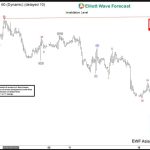When Premier Wen Jiabao addresses China’s largely ceremonial parliament, investors will prick up their ears for any hint that change is coming to the country’s currency regime.
Wen, who swore there would be no more surprises, after Beijing revalued the yuan by 2.1 percent in 2005, will err on the side of caution in choosing his words.
But any emphasis on enhancing exchange rate flexibility rather than maintaining stability will fuel speculation that China may be about to let the yuan rise again after effectively re-pegging it to the dollar since mid-2008.
Some economists reckon that Beijing might have a one-off revaluation up its sleeve. Many others think it will move only haltingly to resume appreciation.
Here is a look at various scenarios of what might happen.
De facto peg maintained
If the Chinese export lobby gets its way, the yuan will stay locked in place until external demand recovers strongly. The Commerce Ministry has repeatedly insisted that a stable yuan has benefited both China and the world during the global financial crisis.
Double-digit annual growth in exports is all but assured in coming months due to a low base of comparison in early 2009, but policymakers will be looking at month-on-month numbers for more solid evidence of recovery. Sequential growth momentum went into reverse in January, with exports down 16 percent from December.
Resumption of gradual appreciation
Many analysts expect Beijing to let the yuan start strengthening again sometime in the next few months, given growing inflationary pressures and the nascent recovery in exports, leaving it roughly three-five percent stronger a year from now.
Offshore yuan forwards are currently pricing in 2.7 percent appreciation against the dollar over the next year, while a Reuters poll conducted last month centred on a three percent rise by the end of this year.
However, the exact form of such a measured climb is subject to much debate.
While the central bank may be most likely to resume gradual appreciation quietly, some economists say it could start with a small revaluation, as in July 2005, and could widen the band within which the yuan may rise or fall on any given day. Versus the dollar, that band is now plus or minus 0.5 percent.
Such a move could be pushed back slightly by political considerations, as Beijing seeks to avoid giving the impression that it is yielding to pressure from the US.
Any such upward drift in the yuan would probably support Asian currencies, from the Singapore dollar to the Japanese yen, that are looked to as yuan proxies.
The impact on commodities markets and commodities-linked currencies is more difficult to predict, as such a move would make imports cheaper but could also be seen as a tightening measure that would temper Chinese growth in the medium term.
New exchange rate regime
Economists have suggested that China would benefit from a new model for determining the yuan’s exchange rate.
Although the exchange rate is theoretically set at present with reference to a basket of currencies, it has in practice been overwhelmingly centred on the dollar. The yuan rose nearly 20 percent in a roughly straight line against the US currency from mid-2005 to mid-2008, giving speculators a one-way bet.
Ting Lu, an economist with Bank of America Merrill Lynch, has said that Beijing should follow Singapore’s lead in targeting a basket of currencies, keeping the basket’s composition a secret so as to create uncertainty about when the central bank might intervene.
Jun Ma, an economist with Deutsche Bank, advocates a “flexible crawling peg against a basket” that would generate uncertainty, as in the Singaporean case, but with daily and monthly volatility limits against the dollar to avoid hurting companies.
Researchers from the Chinese Academy of Social Sciences, a top government think-tank, have suggested a policy of making it clear the yuan will appreciate by three to five percent each year, but in an unpredictable pattern so speculators are wrong-footed.
Big one-time revaluation
A substantial one-time revaluation would fly in the face of Beijing’s promised policy continuity and might appear to domestic critics as if the government was caving in to foreign pressure.
Moreover, given China’s style of consensual decision making, any major policy shift would require agreement from hard-liners opposed to appreciation, limiting the scope for the yuan’s rise.
Still, some market heavyweights have begun to predict a sizeable one-off revaluation.
Goldman Sachs chief economist Jim O’Neill said in February that Beijing could be about to let the yuan strengthen by as much as five percent, while Societe Generale expects a revaluation of five to ten percent around April or May.
A big enough revaluation would, in theory, deter hot money inflows by damping expectations of further major gains. But if it was deemed insufficient, investors might still pile into Chinese assets on expectations the yuan would have to climb further.
Conversely, if the adjustment was big enough to deter speculators, it might batter the very exporters that Beijing has tried so hard to support.
A major yuan revaluation could lead to sharp initial gains for other Asian currencies such as the yen and Australian dollar, which tend to have high correlations with Chinese growth.
But the sharper the move, the greater the possibility that it would also set off worries about a slowdown in the world’s third-largest economy as a result of the impact on exporters, meaning equity and commodity markets might react negatively.
Shares of companies geared towards Chinese final consumption, from luxury goods retailers to automakers, might rally on the hope that cheaper imports would drive China’s demand.












Leave A Comment